Get Tech Tips
Subscribe to free tech tips.
Total External Static Pressure (TESP): A Basic Review

Probably the most popular measurement method for indirect airflow readings is total external static pressure (TESP). A dual-port manometer or two Bluetooth single-port manometers are essential to the HVAC technician toolbag. Here’s a quick review of TESP, why it’s important, and how to make the measurements.
TESP is a pressure reading of the “balloon” pressure inside the ductwork. In other words, there are essentially two types of pressure inside a duct system: velocity and static pressure. Velocity pressure is the “speed” of the flow of air; you can measure it by placing a sampling tube directly into the airstream so that the air blows inside the tube to be measured. Static pressure is different because this is the pressure that pushes up against the outer walls of the duct. This friction is caused by the air moving through the ductwork, coil, dampers, filters, etc. Static pressure is measured in inches of water column (“w.c. or in w.c.).
When a data tag tells us what the design total external static pressure is for a piece of equipment, it refers to the static pressure measured across just that appliance. So, for fan coil air handlers, this includes the coil and blower assembly. When placing static pressure tips in the ductwork for fan coils, the tips should be located between the filter and the cabinet on the return side and between the cabinet and the rest of the supply ductwork.
Sometimes, manufacturer airflow tables do not account for the pressure drop of a heater kit accessory when publishing their design TESP. Therefore, if the fan coil has a heat kit installed, always refer to the notes on the product data and installation manuals for the equipment to determine whether or not the manufacturer accounted for heat strips when creating their fan table. And if they didn’t, don’t worry about finding a place to drill into the cabinet between the blower and the heat strips; simply find the manufacturer’s published pressure drop for the heat kit, and add it to the air handler’s design TESP.
For furnaces, design TESP does not account for the cased cooling coil. The cased coil is considered an accessory, and it has its own design pressure drop. So, when we measure TESP on the furnace, the measurements will be taken between the filter and the blower and between the heat exchanger and the cased coil. Many smart contractors are now installing cased coils with 3-4” sheet metal spacers to allow a test port to be drilled without the worry of drilling into the heat exchanger or anywhere else on the cabinet of the appliance.
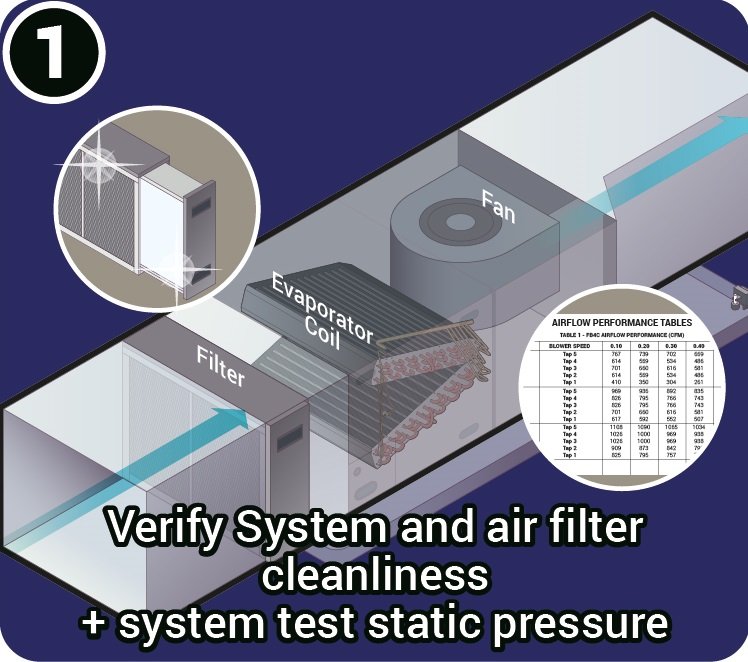
Now, before you drill a hole in the ductwork to insert a static pressure tip, verify system cleanliness by checking the filter, the coil (on both supply and return sides), and blower wheel. Once you confirm the cleanliness, you can make a ¼” drill hole at the appropriate locations depending on the application. A few tips to remember when finding a place to drill are as follows:
- Sections of ductwork with laminar flow (unobstructed smooth path of airflow) are best
- Do not drill into internal components (coils, heat exchangers, heat strips, drain pans, etc.)
- Do not puncture flex duct. If flex duct or a square-to-round fitting is the only thing coming off the appliance, duct modifications must be your first priority.

Next, it’s time to start the test. Zero the manometer with the tips attached before inserting the tips into the ductwork. Check the equipment set-up to determine which system mode (heat or cool) should be tested. If you measure TESP in conjunction with a fan table, the fan table determines which mode should be tested. You should consult fan tables carefully; they include information like whether the coil should be wet or dry, filter installed or no filter, etc. Click HERE for more on fan tables.

Another thing to note when placing the test tips inside the ductwork is positioning. Many technicians argue over whether or not the tip should be facing upstream or downstream of the direction of airflow. The truth is, it doesn’t matter.
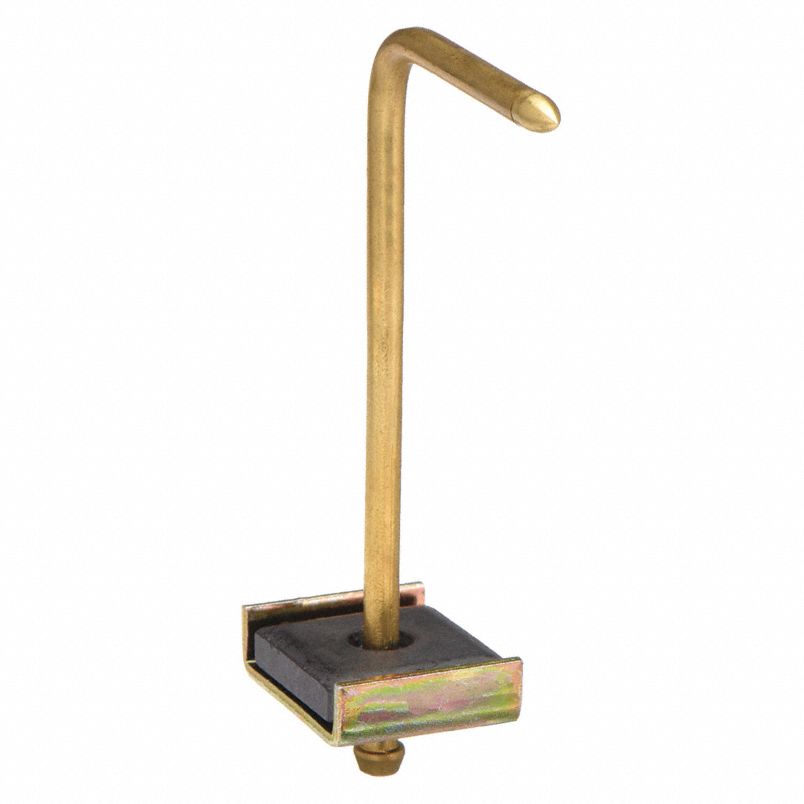
If you look at the tip, you’ll notice that the front end of the tip is capped off. The only test tube holes are around the sides of the tip. That is because we want to sample the static pressure up against the walls of the ductwork. Therefore, so long as the tip is parallel to the air stream and the sample holes are perpendicular to the airstream, it does not matter whether the tip is facing with or against the flow of air. However, one thing to always be aware of is that the tip is placed in the center of the ductwork and not too close to the corners (for rectangular duct systems). We want to avoid as much turbulence as possible in order to achieve the most accurate reading possible.
Make sure the tips being placed in the ductwork corresponds to the correct port on the manometer. Dual-port manometers have a return (negative) and supply (positive) port. If you are using Bluetooth single-port probes, you can map each according to their placement.
Finally, measure the TESP. To do this, find the difference between the positive statice pressure and negative static pressure:
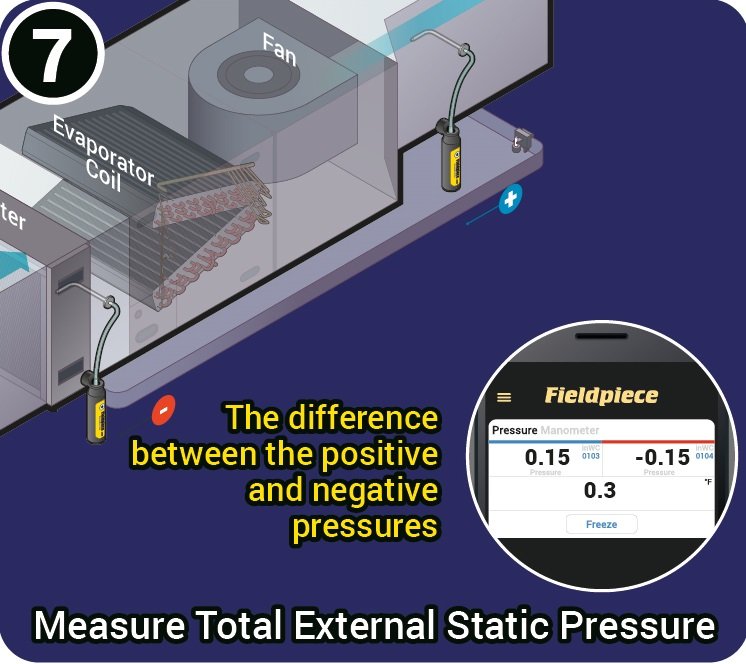
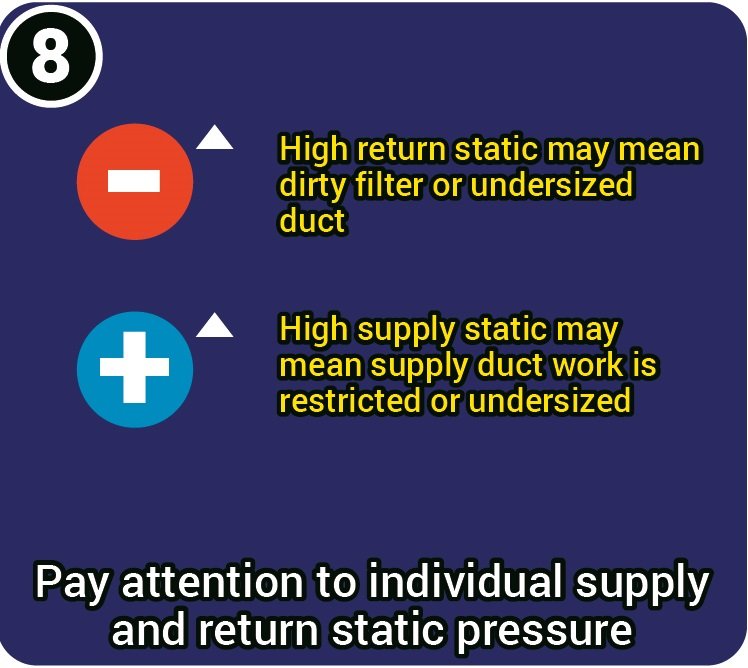
A high return static reading (typically 0.4in w.c. and above) can be caused by dirty filters or undersized ductwork. Those can also result in poor condensate drainage. The blower may even pick up condensate and sling it throughout the cabinet if the return static gets too high. High supply static readings can be caused by undersized or restricted ductwork.
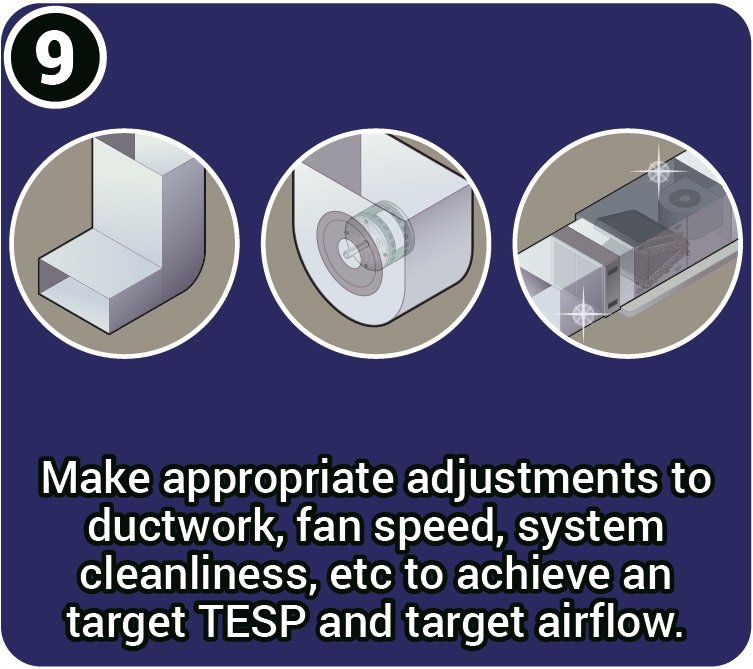
Once the measurement is completed, take any necessary action steps to make corrections to the ductwork, components, or airflow settings in order to improve overall system performance and air distribution. Another way to use the manometer beyond TESP is to measure the pressure drop across specific components like the filter, coil, duct transitions, etc. This can help you pinpoint exactly where the problems are in regard to diagnosing high TESP.
Total external static pressure is one of the most versatile measurements we have available to us as technicians. It’s also the most misused. Be careful about probe placement, and always be sure to use the appropriate plugs for the test ports before leaving the equipment.
—Kaleb
Additional resources:
https://hvacrschool.com/videos/how-to-measure-total-external-static-pressure-tesp/











Comments
Does Total Static pressure help in selection of Fan. In other words while selecting Fan does Total Static pressure need to be considered . Or just static pressure is considered while Fan selection.
Does Total Static pressure help in selection of Fan. In other words while selecting Fan does Total Static pressure need to be considered . Or just static pressure is considered while Fan selection.
?Celebremos a cada rastreador de riquezas ocultas !
wikiluck.com.es/
– https://wikiluck.com.es/#
?Que la fortuna te sonria con celebremos juntos inolvidables beneficios increibles !
п»їhttps://wikiluck.com.es
?Celebremos a cada rastreador de riquezas ocultas !
wikiluck.com.es/
– https://wikiluck.com.es/#
?Que la fortuna te sonria con celebremos juntos inolvidables beneficios increibles !
п»їhttps://wikiluck.com.es
Artistic photography often focuses on highlighting the aesthetics of the human form.
It is about composition rather than surface.
Skilled photographers use natural tones to create mood.
Such images capture artistry and individuality.
https://xnudes.ai/
Every shot aims to show emotion through movement.
The purpose is to present natural harmony in an artful way.
Audiences often value such work for its creativity.
This style of photography blends art and sensitivity into something truly unique.
Artistic photography often focuses on highlighting the aesthetics of the human form.
It is about composition rather than surface.
Skilled photographers use natural tones to create mood.
Such images capture artistry and individuality.
https://xnudes.ai/
Every shot aims to show emotion through movement.
The purpose is to present natural harmony in an artful way.
Audiences often value such work for its creativity.
This style of photography blends art and sensitivity into something truly unique.
Anil, static pressure is like a “budget” your fan has. Checking static pressure on a unit installed in the field tells you if you are within budget and therefore if your airflow is within budget. On the design side, you pick a piece of equipment and then design a duct and filter system within the budget for your unit. Here is an article I wrote that may help break it down better. We also have some great youtube videos with Ed J from ACCA for a true deep dive
https://hvacrschool.com/manual-d-speedsheet-walkthrough/
https://hvacrschool.com/videos/duct-design-for-great-results-w-ed-janowiak-acca/
Anil, static pressure is like a “budget” your fan has. Checking static pressure on a unit installed in the field tells you if you are within budget and therefore if your airflow is within budget. On the design side, you pick a piece of equipment and then design a duct and filter system within the budget for your unit. Here is an article I wrote that may help break it down better. We also have some great youtube videos with Ed J from ACCA for a true deep dive
https://hvacrschool.com/manual-d-speedsheet-walkthrough/
https://hvacrschool.com/videos/duct-design-for-great-results-w-ed-janowiak-acca/
To leave a comment, you need to log in.
Log In